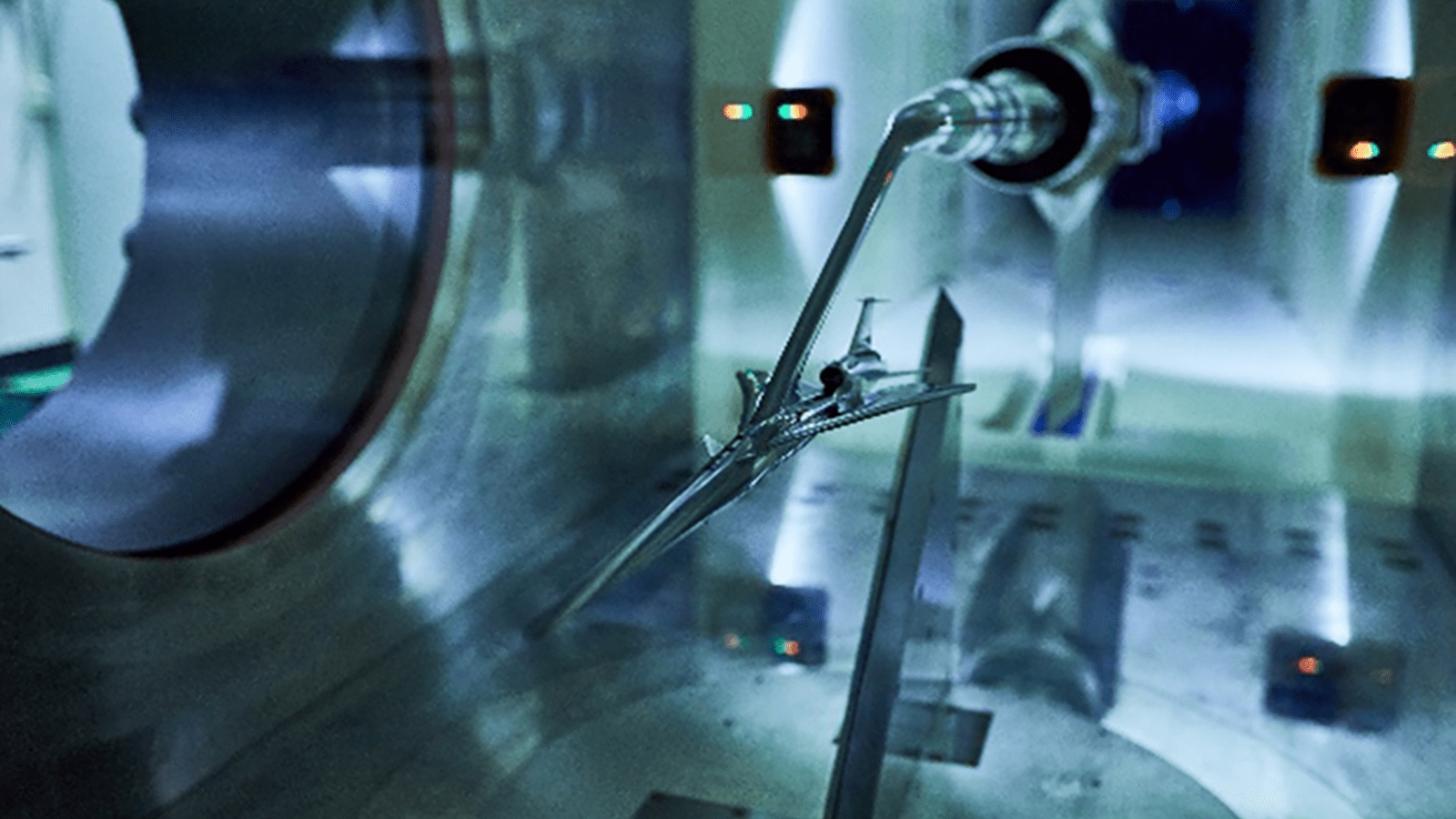Stay Up to Date
Submit your email address to receive the latest industry and Aerospace America news.
The Ground Testing Technical Committee focuses on evaluating aircraft, launch vehicles, spacecraft, structures and engines in wind tunnels and other facilities.
This year, the ground test sector saw a substantial increase in testing and testing capability. At the AIAA Aviation Forum in June, a team of NASA, Boeing and the Japan Aerospace Exploration Agency, JAXA, presented the results of a 2022 sonic boom test conducted with a model of NASA’s X-59 experimental aircraft. In January, members of the NASA and Boeing High-Lift Common Research Model team completed a test of the full-span 3.23% scale model of the CRM-HL ecosystem reference geometry at Kawasaki Heavy Industries’ low-speed aeroacoustics wind tunnel in Gifu, Japan.
After three years of data implementation research at the 11-foot Transonic and the Unitary Plan wind tunnels at NASA’s Ames Research Center in California, the Unsteady Pressure-Sensitive Paint Capability Challenge team in January released the open-source uPSP processing software to increase accuracy of high-speed cameras. The release addressed new techniques for internal and external calibration to store, process, transfer and share uPSP data in near real time.
In February, Joby Aviation of California began testing propellers for its electric air taxi at the 40-by-80-foot wind tunnel test section at the National Full-Scale Aerodynamic Complex at NASA Ames. Also in February, the National Research Council of Canada, NRC, completed the design, build and calibration of a large outdoor rig to simulate in-flight icing conditions for remotely piloted aircraft.
From March to April, the Technical University of Berlin conducted a low-speed wind tunnel test of a distributed-propulsion, two-dimensional airfoil model in a high-lift configuration at the German-Dutch Wind Tunnels in Brunswick, Germany. The test was part of efforts to generate an experimental database for aircraft with distributed hybrid-electric propulsion. In September, the university conducted an aeroacoustics test at its DNW-NWB large wind tunnel after tests in 2022 at a lower Reynolds number.
Engineers at NASA’s Langley Research Center in Virginia completed a new specification, “Fabrication of Additively Manufactured Metallic Parts for Use in Wind Tunnels,” filling a gap left by existing standards.
In May, the National Full-Scale Aerodynamic Complex at NASA Ames completed a hover validation and acoustic baseline test at its 80-by-120-foot wind tunnel test section, the culmination of a multiyear collaboration between NASA, the U.S. Army and the AIAA Rotorcraft Hover Performance Working Group. Advanced optical imaging techniques provided researchers with the most comprehensive data to date to characterize performance of a hovering rotor system.
A self-aligned focusing schlieren system was installed and tested in April, May and June at the National Transonic Facility at NASA Langley, providing much-needed flow visualization in a notoriously difficult environment for optical diagnostics.
In July, NRC completed an aeroacoustics test of a ducted-fan model with baseline blades in the 0.9-meter hemi-anechoic wind tunnel. This was followed by a balance calibration for the council’s 2-by-3-meter low-speed wind tunnel, with over 3,000 unique loadings and a comprehensive uncertainty analysis of the calibration.
In September, NASA Ames’ Project Red Rover created and formalized a process for transferring data collected in the Unitary Plan Wind Tunnel test section to the center’s Advanced Supercomputing Division, leveraging existing NASA high-end computing capabilities to process large data sets in near real time.
The University of Arizona in July installed a transonic test section in its 15-by-15-inch polysonic wind tunnel. Plans call for making updates to the air storage system and fast-acting valve storage of the university’s 15-inch-diameter Mach 5 Ludwieg tube, as well as installing a quiet nozzle.
Contributors: Junichi Akatsuka, Devin Burns, Paul Gilles, Jorge Pereira Gomes, Lara Lash, Luc Levasseur, Jesse Little, Phil McCarthy, Shinji Nagai, Chris Nykamp, David Orchard, Stuart Stevenson, James Threadgill, Josh Weisberger, Julien Weiss and Courtney Winski
Stay Up to Date
Submit your email address to receive the latest industry and Aerospace America news.




